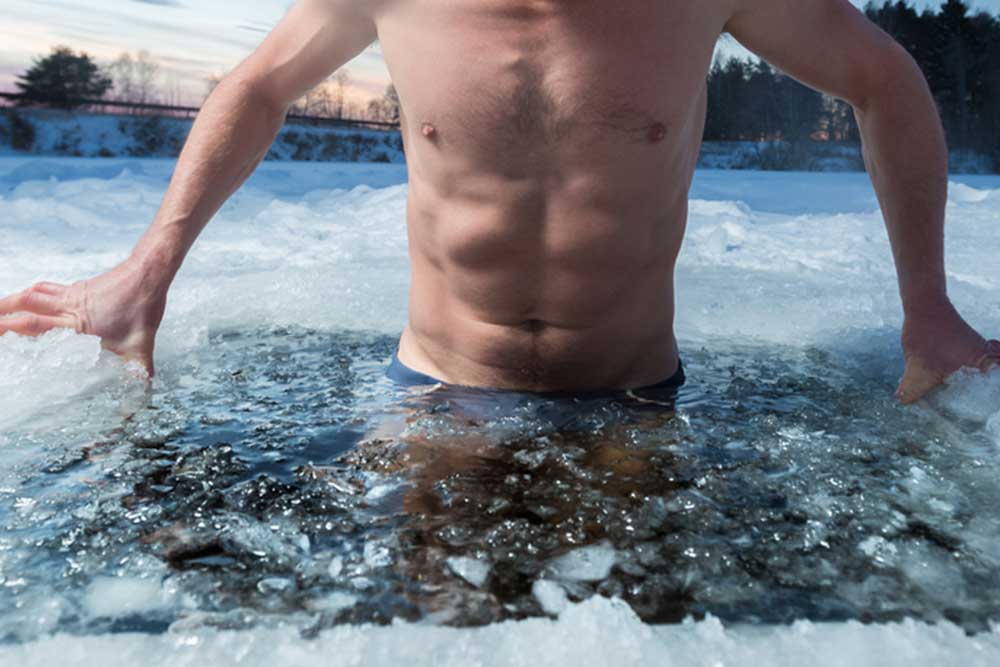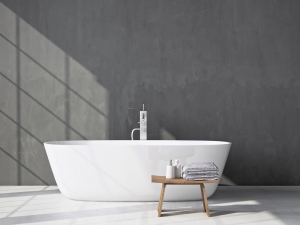The Skinny On Cold Baths – Do They Actually Work and If So How?

Gillian White – BSc., MSc., PhD Candidate, University of Toronto, Department of Exercise Sciences
The Skinny On Cold Baths – Do They Actually Work and If So How?
Getting the most out of your workouts, paradoxically, can be as much about what you do during your workout as it has to do with what you do after your workout. Sport science investigating recovery strategies is a massive field unto itself. Furthermore, there are many sub-fields within it. For athletes who need to get the most out of their workout while still being ready to push themselves the next day, finding ways to speed the depression in athletic performance that follows hard workouts is paramount to the efficacy of their training. One of the common forms of recovery strategies that have become mainstream over the last decade is cryotherapy, or cold therapy.
How It Works:
Cryotherapy encompasses everything from icing acute injuries to dunking yourself in ice water to standing in air chilled to -180 degrees. In all cases, the supposed mechanisms of therapeutic action are the same: chill the tissue, slow any destructive post-exercise catabolic cellular reactions (“catabolic” refers to reactions that result in “breaking down” compounds & tissues), and minimize inflammatory processes. To understand how and why manipulating these things can effect post-exercise recovery, we first have to understand exercise as a stressor.
Exercise As A Stressor:
Exercise can be both mechanically and metabolically stressful. Mechanically stressful workouts involve very heavy weights, a high degree of repeated contractions, or a significant contribution of eccentric exercises (sometimes called “negatives”, these are exercises in which the muscle is loaded while it lengthens, like lowering yourself from a chin-up bar or landing from a jump). These types of exercise cause physical strain on the muscle fibres, which can create micro-tears and initiate an adaptive signalling response through these strain-sensing receptors in the muscle. In this way, the muscle adapts with a one step back, two steps forward kind of approach. Immediately following the workout and for 24-72h following, the tears in the muscle make the muscle weaker, while an inflammatory response causes soreness but also functions to repair the tears and make the muscle stronger for the next workout.
Metabolically stressful workouts are those that require a lot of energy to sustain the efforts. Generally speaking, you don’t experience the same type of soreness the next day but the increased metabolic rate required to keep your muscles going creates by-products – namely, heat and reactive oxygen species. Reactive oxygen species (sometimes called ROS for short) are a type of free radical that often come up in conversations of anti-oxidants and can disrupt various parts of the muscle fibre, making it less functional. ROS also signal an inflammatory response that causes a depression in performance in the short-term but contributes to training adaptations in the long-term. Again, a sort of spending money to make money way of adapting to the stress of exercise.
Cryotherapy As An Anti-Inflammatory:
The purported way in which cold-baths and cryotherapy work is through reducing this inflammatory signalling. While inflammation is actually required for repair of damaged or disrupted tissues, if it’s prolonged or excessive, it can actually cause more damage. And the manner in which inflammatory signalling occurs, is that it creates a positive feedback loop of damage eliciting signals, and signals generating stronger signals. The operating theory of cryotherapy and other so-called anti-inflammatory recovery modalities is that they intervene in the inflammatory signalling so that it doesn’t become excessive and cause additional damage over and above that induced by the exercise stress itself, thereby reducing the magnitude of repair that is required. By reducing the magnitude of damage/disruption, the degree of functional losses and time required to get back on baseline should be improved accordingly.
Does it actually work?
The research on cold-baths is extremely variable. The practice of cold-baths came from anecdotal and trial and error implementation by athletes and their sport science/coaching teams. Thus, there is no “standard” protocol. In addition, inflammation is a sort of ubiquitous experience that follows exercise. The type of exercise used as the “stress” is often variable. This means exercise such as largely eccentric exercise like down-hill running or repeated plyometric type exercise. It can also have almost no eccentric component like cycling time-trials. Finally, it can mean contact sports like rugby to non-contact sports like basketball.
While all of these can be expected to cause inflammation in some shape or form and cold-baths should help to reduce this, the lack of uniformity makes it very difficult to draw any meaningful conclusions with respect to the type of exercise it’s most beneficial for and just how useful it really is. Adding to this is a lack of studies actually measuring inflammatory markers to confirm that it is indeed acting as an anti-inflammatory.
Best Practice Guidelines
Recently, a meta-analysis by Machado et al. in Sports Medicine investigated the different durations and temperatures used in the existing research. The studied aimed to establish “best-practice” guidelines. Meta-analyses pool the data from different studies to try and increase the statistical power of the data generated from the individual participants across studies. Consequently, they found that a temperature range from ~10-15°C was most effective for reducing immediate (0-2 h post-exercise) and delayed (12-48 h post-exercise) functional impairments. Furthermore, a time range from 10-15 min was most effective. Interestingly, these same findings were established in an original research paper in 2014 by White, Rhind, & Wells. In this paper, different bath temperatures and durations were compared with passive seated rest.
Although their study sample size was quite small, their findings indicated that an immersion of 10 minutes and 10°C was the most effective for facilitating recovery of muscle function, as indicated by jump height. Interestingly, this paper also found that the systemic inflammatory response was actually increased with long duration (>30 min) immersion times and that even the short duration (10 min) immersions didn’t seem to effect inflammatory markers in circulation. Cold-baths do seem to have a functional effect post exercise. However, they might not be working the way we assumed they do. Hence, more research will need to be conducted to elucidate the mechanisms of action.
Are there any risks?
Cold-baths appear to be at least moderately effective. Furthermore, they are commonly regarded as beneficial by the athletes that use them. However, some points are worth noting. If indeed cold-baths function as an anti-inflammatory, using them after every workout can be expected to reduce training effects. This is because the inflammatory signaling evoked by the stress of exercise is important for adaptive signalling. Using them after particularly tough workouts may really only make sense in the short-term, at the expense of long-term training gains.
Also, cooling your muscles also cools the nerves. These nerves carry motor signals to the muscle. They also carry sensory signals from the skin and muscle back to the central nervous system. Reducing the temperature of your nerves slows the conduction of the signals. Consequently, this reduces the temperature of your muscle, and slows metabolic processes. This means that it is functional as an analgesic to reduce pain and discomfort. But, it also reduces your muscle’s reaction time, proprioception (spatial awareness and coordination), and power. Lastly, if you are susceptible to cold damage, such as chilblains, frostbite, Reynaud’s disease or other circulatory conditions, you might want to steer clear of dunking yourself in very cold water for any length of time.
 Guidelines
Guidelines
1. 10-15 min in 10-15°C water
2. Get in the bath as soon as possible after your workout. The longer you wait the longer the head start inflammatory signalling has.
3. Unless you’re preparing for a marathon in the head, don’t use cold-baths before your workout. This is because it will impair your speed, power, and coordination.
4. Use cold-baths sparingly. Although inflammation may cause short-term pain, we need it for long-term gain. Excessive use of cold will blunt the training effects you’ve been busting your keester for.
Stay cool FTG’s – but not too cool, for too long, or too often!
References:
Machado AF, Ferreira PH, Micheletti JK, de Almeida AC3, Lemes ÍR, Vanderlei FM, Netto Junior J, & Pastre CM. (2016). Can Water Temperature and Immersion Time Influence the Effect of Cold Water Immersion on Muscle Soreness? A Systematic Review and Meta-Analysis. Sports Med, 46(4), 503-14.
White GE, Rhind SG, & Wells GD. (2014). The effect of various cold-water immersion protocols on exercise-induced inflammatory response and functional recovery from high-intensity sprint exercise. Eur J Appl Physiol, 114(11), 2353-67.
You Might Like:














